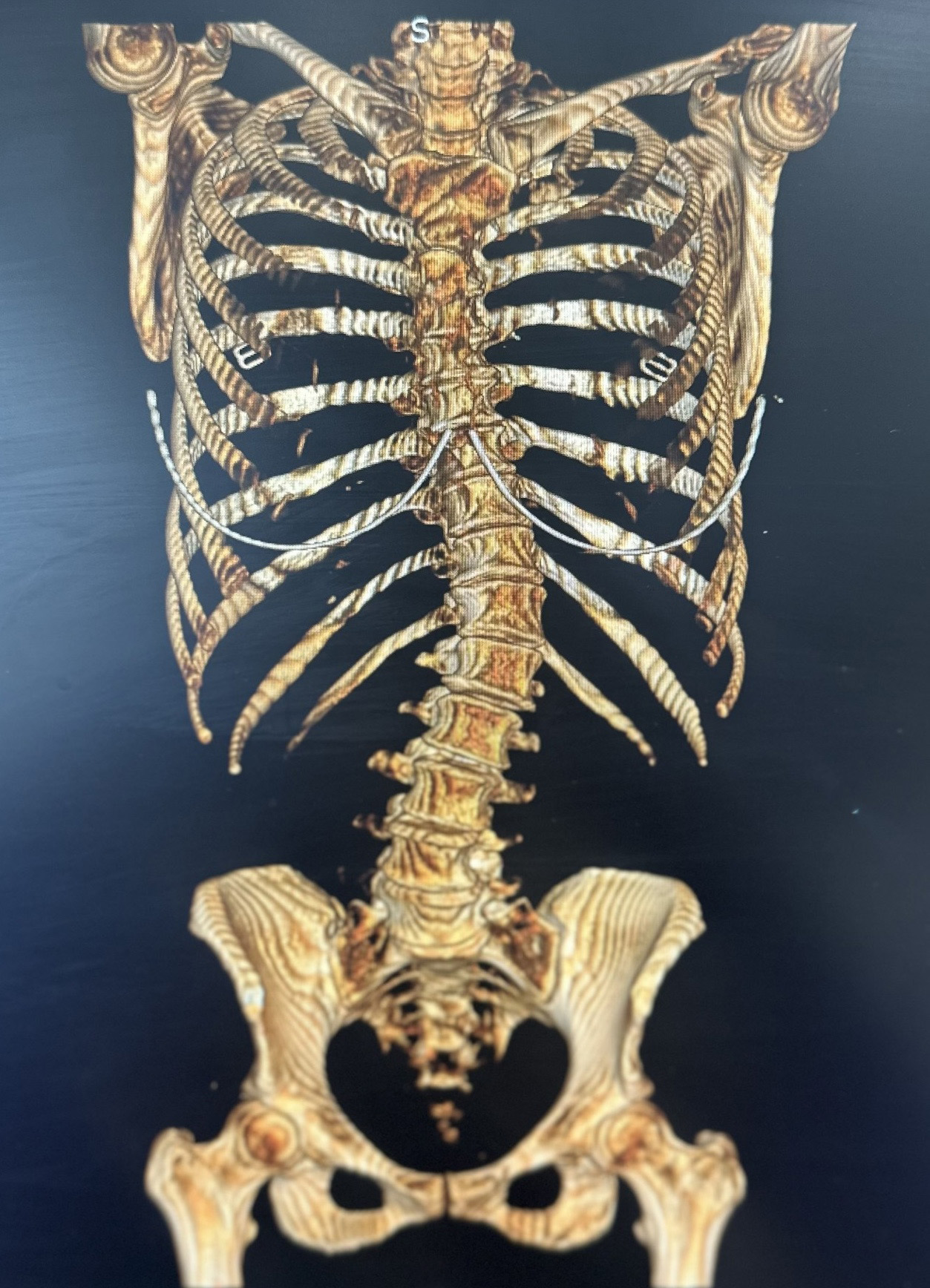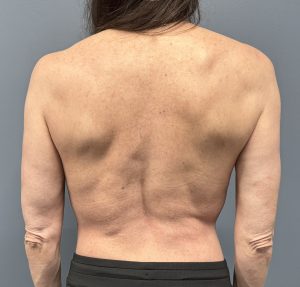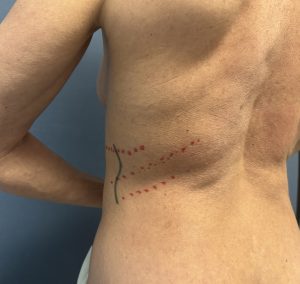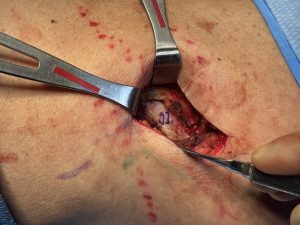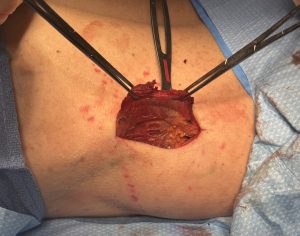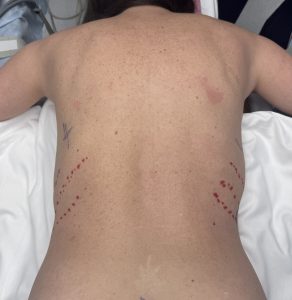A variety of women seek waist-narrowing surgery — from transgender women to female bodybuilders — all sharing a common goal: an improved chest-to-waist or hip-to-waist ratio for a more defined figure. Within these diverse patient groups, anatomical differences must be considered. One not-uncommon finding in some rib removal candidates is scoliosis. Some patients have undergone scoliosis surgery in the past, while others have not, but asymmetry of the lower ribcage is almost always present to some degree.
The Role of Scoliosis in Rib Removal Surgery
When scoliosis is present, an important surgical consideration arises: should different lengths or even different numbers of ribs be removed on each side to account for the asymmetry? The best way to answer this question is through a 3D CT scan of the patient’s lower ribcage, which allows correlation between the skeletal anatomy and the visible external shape.
In my experience, it is usually unnecessary to remove a different number of ribs on each side. Rather, adjusting the lengths of the ribs removed — particularly on the more protruding side — is key to achieving symmetry.
Case Study: Female Athlete with Congenital Scoliosis
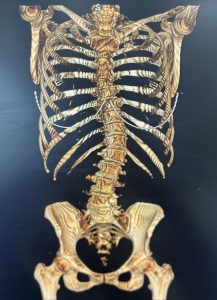
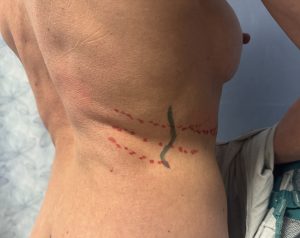
Surgical Technique
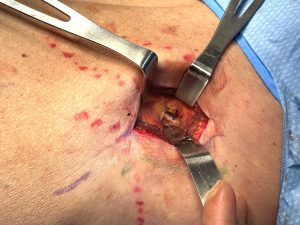
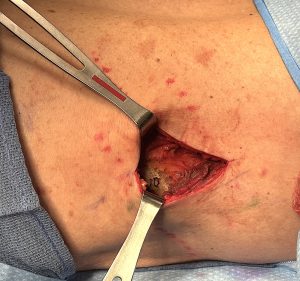
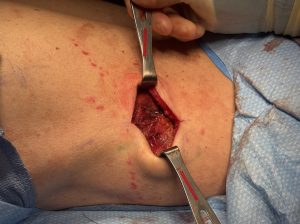
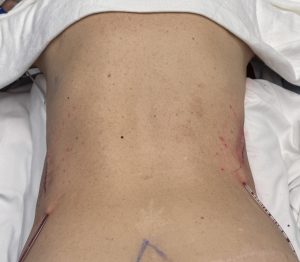
Understanding Scoliosis and Rib Cage Asymmetry
Scoliosis most significantly affects the lower ribcage, as the greatest spinal curvature usually occurs in the lower thoracic or upper lumbar spine. This twist creates asymmetry in the lower torso: a “good” side with inward curvature, and a “bad” side with outward protrusion. Consequently, different rib lengths often need to be removed on each side to achieve balance — a calculation that can only be accurately made by reviewing the patient’s 3D CT scan preoperatively.
Latissimus Dorsi Muscle: Functional Considerations
A common question among female athletes and bodybuilders is whether removing portions of the LD muscle impairs strength or training ability. The answer is no. The amount of muscle removed is a small, carefully sculpted portion of an otherwise very large muscle, and does not create functional impairments or limit athletic performance.
Key Takeaways
? 3D CT scans are essential to evaluate lower ribcage asymmetry preoperatively in patients with scoliosis.
? Differential rib length removal (not number of ribs) is usually required to correct asymmetry.
? Bodybuilders and athletes can safely undergo rib removal and LD muscle modification without compromising their training or performance.
Dr. Barry Eppley
World-Renowned Plastic Surgeon

